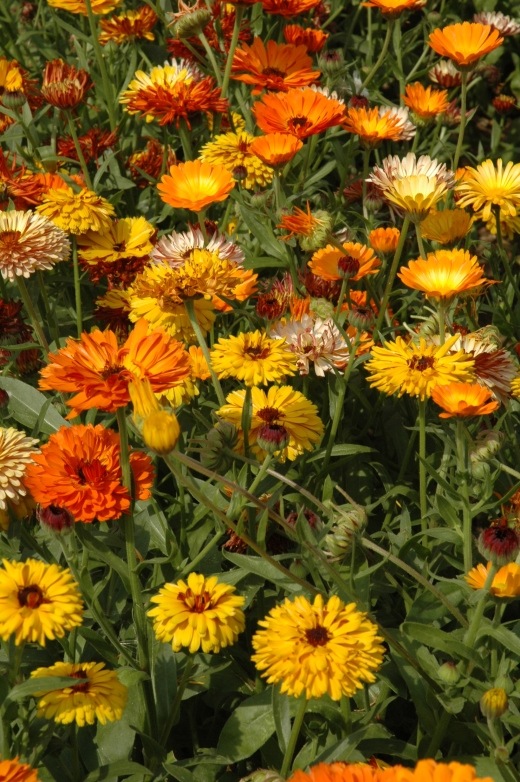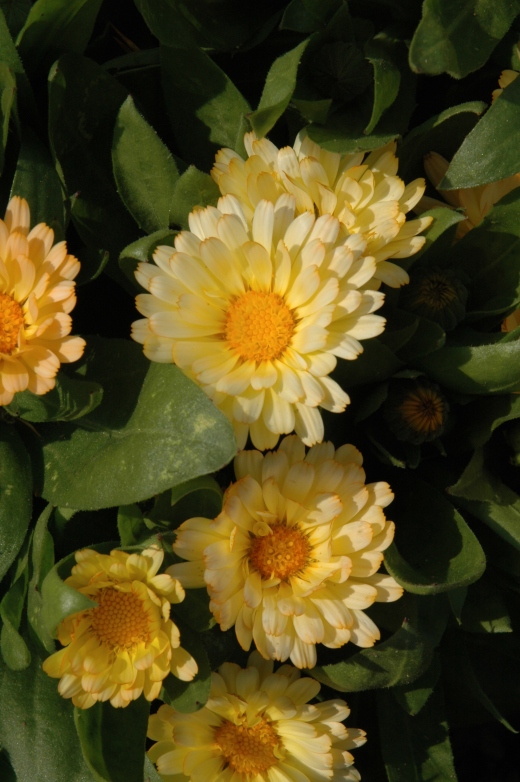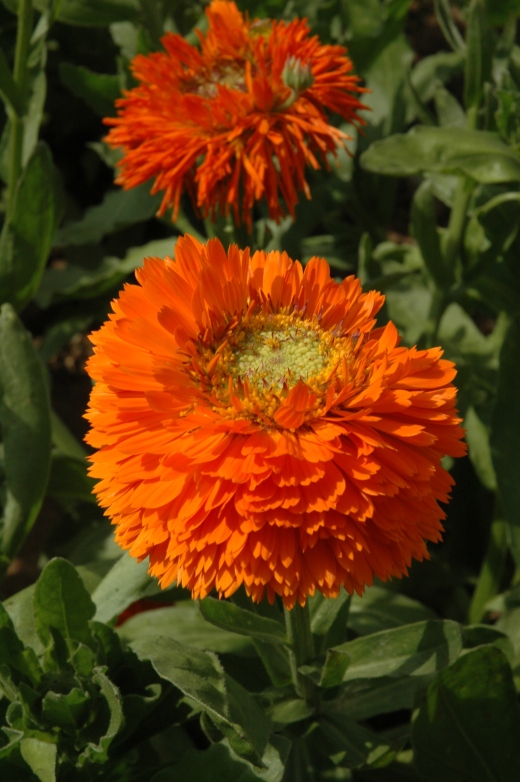Amazing annuals: Calendula
Nothing is easier to grow and nothing else is as bright and cheerful.

Many people dismiss annuals because they are too much work – having to replace them every year. Other people think they are too bright and gaudy. I love them because they are so cheerful and eager to please. But, of course, any opinion can be argued against and I am shot down in flames with my ‘bright and cheerful’ argument when annuals include such dastardly weeds as bittercress and groundsel. Not all annuals are beautiful. But then not all annuals need to be planted every year. Some will happily and regularly self seed. Of course, to the ungrateful they then become weeds. But, though calendula is among the most tenacious of self seeders it would be a hard-hearted person who really considered these bright and beautiful plants to be a nuisance – in the same league as ground elder or bittercress.

I remember a story from Margery Fish (Cottage Garden Flowers 1961). Writing in a chapter entitled ‘Uninvited Guests’ she wrote ‘And there will always be marigolds. I have asked many country folk to tell me what flowers they remember in their earliest gardens, and they all say marigolds, for once you grow these plants you will always have them. I knew a child who thought there was something supernatural about her gardening efforts. Every year she was given a few penny packets of seeds which she sowed with great care but whatever she sowed they all came up as marigolds! It never occurred to her that the seeds were in the ground before she started and nothing else would have the chance to grow.’ Rereading Margery Fish now is not quite the unalloyed joy it was when I read her in my teens. But it is no exaggeration to say that she was very influential on my interest in gardening and my likes.
Although there are other species, all found around the Med. all our garden calendulas are derived from C. officinalis. The name calendula is derived from the same root as calender, because the plants bloom all year round. The whole plant is aromatic and slightly sticky. I like the aroma and find it pleasantly herbal, much less pungent than the French and African marigolds in the genus Tagetes (and which don’t come from Africa or France). Officinalis means ‘of the shop’ referring to the plant’s use for herbal remedies. It would be possible to write a book about this lovely plant and its many uses. The flowers were used for colouring butter, as a cheap saffron substitute and as a skin treatment. I even put them in salads and actually like the taste – unlike most edible flowers which are, truly, edible but do not bring much to the dish.

These are truly hardy annuals and they often act as biennials. My ‘Snow Princess’ plants that bloomed all summer have self seeded and are surrounded by small seedlings while the original plants, while leggy, are still in bloom, in the middle of December. They are usually sown in spring, from March to May and again in September for earlier flowers the next year. They are easy to grow and although they are prey to aphids, and plants in very dry soil will get mildew, they are no trouble at all. The taller kinds really need staking and are said to be good for cutting but I am not a great fan – the flowers do not last that long in water. When it comes to colours and flower shapes, you can have every citrus shade you like and there are singles, doubles and anemone-centred flowers. The ‘eyes’ can be contrasting colours too, as in the photo above (which is not that nice).
‘Touch of Red’ is a good mix with dark reverses to the petals. ‘Pink Surprise’ was a surprise when I grew it because it was not pink – at all. The ‘Kablouna’ and ‘Kalinka’ series have anemone-shaped flowers with a dome in the centre. Lots of old varieties seem to have survived but, like lots of old, cheap strains, they may not be as good as they once were. I famously dislike dwarf varieties but the nicest surprise of recent years has been ‘Oopsy Daisy’ which is compact and covered in pretty single and semi-double flowers in shades of cream, yellow and orange, with several bicolours. It seems to self seed and maintain its low habit and I have never found one that didn’t make me smile.
This is one that I just can not figure out. It is supposed to be easy, but has never done well in any of my gardens. Yet, those that self sow on the side of the road do quite well.
I wonder why they don’t grow well with you – very odd.
A few species are like that. Outsiders think we can grow anything here, but that is an exaggeration. Hellebores, snapdragons, columbines, hostas,. . . etc.
It is annoying that nowhere is perfect for everything!
Well, the Santa Clara Valley is about as perfect as it can possibly get. I just happen to want to grow things that I should not grow. I know it is not impossible to grow calendula here, because others do it. In fact, . . . I may try again. My planter box in town is in front of a bicycle shop that has a big sign in blue and yellow. The last time I tried calendula was an attempt to match the yellow of the sign. It would have worked out nicely. I may do it again. I could get yellow calendula, but at the time, I could not find seed for yellow nasturtium. Even if I could get yellow nasturtium, I sort of want to get calendula to grow there, with nasturtium cascading over the edge of the planter box.
I’m enjoying this series of annual flowers very much.Thank you.
Thank you – glad it is proving useful
I wondered if you know where Tony gardens? Whereas I said I didn’t “do” annuals I’m finding that in fact I do a bit! Mainly throwing snapdragon and marigold seeds here and there and hoping for the best! I’m loving “Oopy Daisy”.
Good plants.